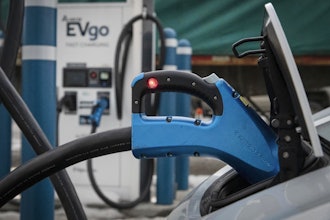Watching a sci-fi flick, like those in the “Terminator” series, probably shouldn’t inspire you to get to work on advanced robotics — at least, not without being really careful about it.
But one aspect of those movies and others like them — namely, the ability for robots to self-repair themselves by deploying a liquid material — apparently prompted one engineer to develop a wearable technology that utilizes liquid metal.
Purdue University researchers this week outlined the details behind a new device known as the liquid metal inclusion-based triboelectric nanogenerator.
The long-named wearable device includes a layer of silicone embedded with liquid metal, which allows it to convert the human body’s biomechanical signals into electricity.
Researchers said the system could lead to devices that power themselves using energy from the body that would be otherwise wasted.
And those human-integrated technologies, in turn, could have applications for everything from consumer electronics and health monitors to robotics, virtual reality systems and the military.






















